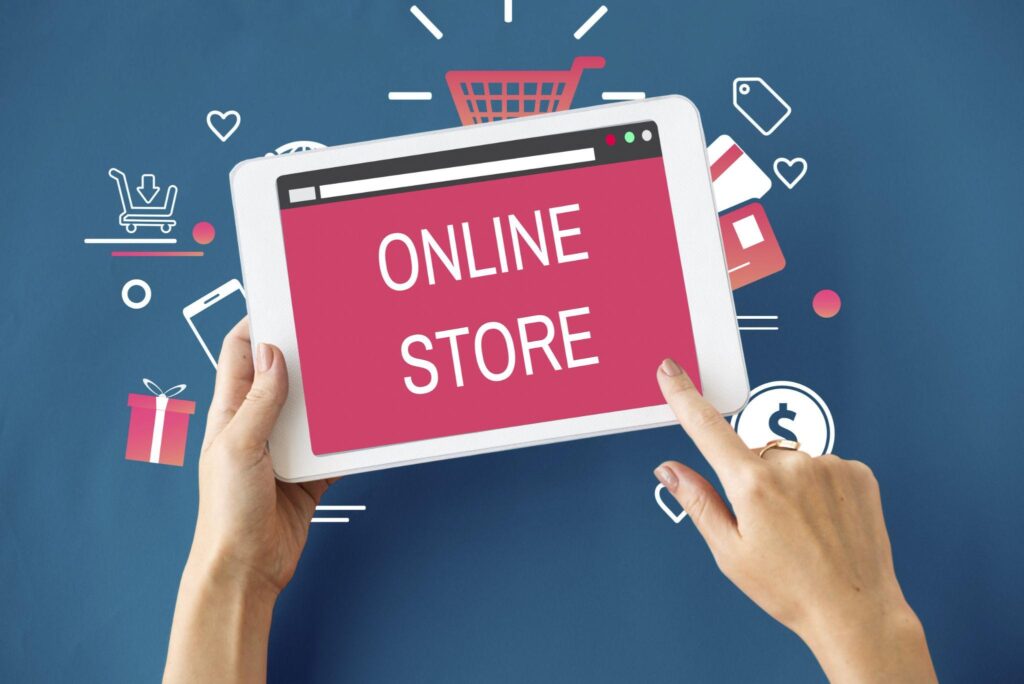The internet has opened up a world of opportunities for entrepreneurs and small business owners. One of the most lucrative ways to make money online is through e-commerce. Online shopping has become the norm, and more people are turning to the internet to purchase goods and services.
With the right approach and a bit of hard work, you can start and grow a successful online store that generates a steady income stream.
This article will expertly guide you through the exciting journey of launching your e-commerce store and propelling it to new heights of success.

1. Choosing a Niche
Importance of Choosing a Niche
The first step in starting an online store is to choose a niche. A niche is a specific market or area of focus for your store. Choosing a niche is important because it will help you target a particular group of customers and stand out in a crowded market. When you have a niche, you can focus on providing the best products and services to that group of customers.
Researching the Market Demand for Your Niche
To find a niche, start by thinking about your interests and passions. What are you knowledgeable about, and what do you enjoy? Consider your skills and experience as well. Once you know what you want to sell, research the market to see if there is a demand for your products or services. Look at what your competitors are doing and see if there is room for you to enter the market.
2. Setting up Your Online Store

Once you have chosen a niche, the next step is to set up your online store. You can use several platforms to create and host your store, such as Shopify, BigCommerce, and WooCommerce. These platforms are user-friendly and provide all the tools you need to set up your store quickly and easily.
Building an E-commerce Presence: Platform, Domain, and Branding Considerations
Choose a domain name that is easy to remember and represents your brand. Your domain name should be short and memorable, and it should also be related to your niche. Once you have chosen a domain name, you can set up your store’s branding, including your logo and colors.
Payment and Shipping Options: Key Factors for Customer Satisfaction
It’s also essential to set up your payment and shipping options. You’ll need to choose a payment gateway and decide how to handle shipping. This is important to ensure that your customers can make purchases easily and that your products are delivered on time.
3. Finding Products to Sell
The next step is to find products to sell. There are several options for sourcing products, including dropshipping, wholesale, and private labels. Dropshipping is when you sell products that are manufactured and shipped by a supplier. Wholesale is when you purchase products in bulk from a supplier and resell them at a higher price. A private label is when you create your own brand and sell products under that brand.
When choosing products to sell, it’s essential to find products that are in demand and have a good profit margin. You’ll also want to consider the competition and the costs of manufacturing or sourcing the products.

4. Marketing and Promoting Your Store
With your store fully operational and your inventory available for purchase, It’s time to let the world know about it. A great way to kick off your marketing efforts is by building an email list of loyal customers who will be the first to know about new products, sales, and promotions. Utilize the power of social media and email marketing to reach a broader audience, connect with potential customers, and showcase your products in an engaging way.

If you’re looking to amplify your reach, consider paid advertising. Platforms like Facebook and Google Adwords allow you to target specific groups of people and reach new customers who are most likely to be interested in your products. Not only is paid advertising cost-effective, but it also guarantees that a wider audience will see your store and products. So, what are you waiting for? Start promoting your store and watch your sales soar!
5. Growing and Scaling Your Store
As your store grows, it’s essential to scale and expand your business. One strategy for scaling your store is to add new products and services to your offerings. This will help you reach new customers and increase your sales. You can also consider expanding into new markets and reaching new audiences.
Another critical aspect of growing your store is managing inventory and fulfillment. As your business grows, it’s important to have a system in place to track and manage your inventory. This will help you avoid stockouts and ensure that you always have products available to sell.
To optimize the success of your online store, it is crucial to monitor and analyze its performance. Utilize analytics tools to track sales, customer behavior, and website traffic. This data can assist you in identifying areas for improvement and making informed decisions for your business strategy.
6. Product Photography and Product Description

Product photography is the art of taking high-quality photos of a product to showcase its features and benefits to potential customers. Here are some tips for taking great product photos and writing compelling descriptions:
- Use a high-resolution camera
- Take photos in natural light or use a lightbox
- Use a white or neutral background
- Take multiple pictures from different angles
Product descriptions are written to provide detailed information about a product and its features. To write compelling product descriptions:
- Use clear and concise language
- Highlight the benefits of the product
- Use action words to create a sense of urgency
- Include product specifications and dimensions
- Use keywords to optimize for SEO
Having high-quality product images and descriptions is crucial for e-commerce as it helps increase the credibility of the product and the customer’s trust. It also helps to increase the chances of conversion.
7. Keeping up With The Latest Trends and Technologies
Staying on top of the latest trends and technologies in e-commerce is crucial for the success of your online store. By keeping up with the latest advancements, your store can stay competitive and relevant in the marketplace and attract more customers. Understanding what your customers want and expect can help you create a better user experience and boost sales.
The Benefits of Keeping Up with the Latest Developments in E-commerce:
New technologies and tools can help you automate and streamline your business operations, saving you time and money. Here are some of the key benefits of keeping up with the latest e-commerce trends and technologies:
- Staying competitive in the marketplace
- Understanding customer expectations and needs
- Reaching new customers
- Gathering valuable feedback
- Improving customer service and sales
If you want to take your online store to the next level, One essential step is to stay ahead of the curve when it comes to competition. How can you do that? By keeping a close watch on industry trends and monitoring what your rivals are doing. Researching is key! Utilize social media and other online platforms to stay connected with your customers and gather valuable feedback.
Implementing New Technologies for Better Customer Service and Sales

Adapt new technologies such as chatbots, personalization, and machine learning to improve customer service and sales. Analytics and data tools can be used to gather insights on customer behavior and improve marketing strategies. Investing in automation tools can also streamline business operations and increase efficiency. So, new technologies and tools can significantly benefit an online store, leading to increased revenue and growth.
FAQs
How do I find products to sell on my online store?
There are several options for sourcing products, including dropshipping, wholesale, and private labels. It’s essential to find products that are in demand and have a good profit margin. It’s also important to consider the competition and the costs of manufacturing or sourcing the products.
How do I handle inventory and fulfillment for my online store?
As your business grows, it’s crucial to have a system in place to track and manage your inventory and to efficiently handle the fulfillment of orders. This may include using inventory management software or outsourcing fulfillment to a third-party logistics provider.
How do I handle customer service for my online store?
Providing excellent customer service is crucial for the success of your online store. This can include responding to customer inquiries and complaints in a timely and professional manner, offering refunds and exchanges, providing product education and support, and gathering customer feedback to improve the customer experience.
Conclusion
In conclusion, creating and nurturing an e-commerce venture can be a highly profitable method of generating income online. By identifying a specific market niche, establishing a well-designed online store, sourcing in-demand products, and executing effective marketing strategies, you can develop and maintain a steady stream of revenue.
As your business grows and evolves, it is crucial to continually scale and diversify your offerings, explore new markets, and efficiently manage your inventory and fulfillment processes. With the appropriate approach and dedicated effort, you can successfully launch and expand a thriving online store.
